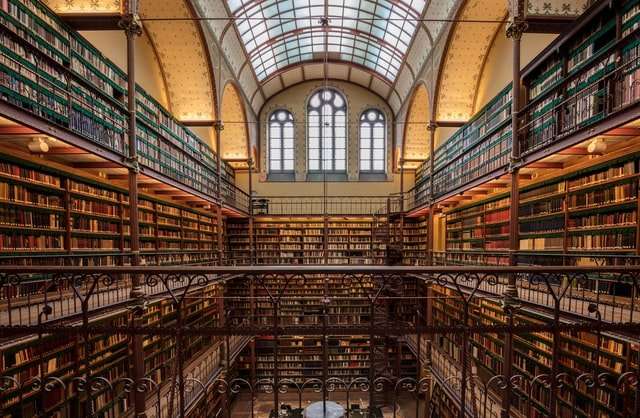By the way, if you want to paint your own frescoes and have been looking for a step-by-step guide, I can recommend this one. It’s in Italian but Google Translate does a pretty good job with it and there are pictures throughout.
Now that you’re an expert, you can use your power for evil. Go forth and create a masterwork of stone art!
How to Fresco Paint like the Pros
There are many good reasons to create your own fresco. You may be tired of looking at the same old walls or tired of hiring painters to do work you could do yourself. Or maybe you want to become famous or just enjoy the challenge. If so, read on.
This page will guide you step-by-step through the process of creating a beautiful fresco. I will follow a made-up person named Joe who is painting his living room wall with a scene from Shakespeare’s Midsummer Night’s Dream. The finished fresco is shown below, but it is Joe’s journey that will teach you how to get there.
Preliminary Research
Joe begins his project by doing some research on the internet to learn about fresco painting. He reads books, watches videos, and talks to artists until he understands the basics of what he needs to know before he can start work:**
Fresco is the most widely used painting medium in the world, and the most durable. You’ll find frescoes on buildings in Pompeii and Herculaneum that have survived two thousand years of weathering. Frescoes are one of the oldest painting techniques known to man, dating back to pre-historic cave paintings. In its most basic form, fresco is a mural painted onto wet plaster. As the plaster dries it bonds with and becomes part of the paint, resulting in excellent durability and brilliant colors.*
Because it is a technique that has been used for centuries, there are many ways to do it. You may want to try making your own fresco murals if you want create an artistic masterpiece or if you want a very long-lasting mural that will be virtually maintenance-free.*
Here’s how!*
How to Paint Frescoes
Frescoes are paintings done on plastered walls, ceilings or sometimes on canvas. The word fresco literally means “fresh” and indicates that the painting is not permanently fixed to its background. Frescoes can be made using several different techniques.
A paint preparation process called “buon fresco” (Italian for “good fresco”) is used for painting interior walls and ceilings that will be exposed to direct sunlight for extended periods of time. The colors in this form of fresco cannot fade or shift, even over many years, without damaging the plaster surface.
The preparation of a “buon fresco” painting involves many steps. An artist first sketches the proposed design on paper after which it is transferred onto a wall by tracing with a chalk or charcoal pencil.”
Fresco painting is one of the oldest art forms in existence. The first frescoes were painted on cave walls by prehistoric humans, and this technique has been used ever since. Although the methods have changed over time, and although the frescoes may be viewed in a wider range of contexts, the principles of fresco painting remain the same.
When the subject of the frescoes is not a religious one or an allegory, it is a portrait. This is the case in the Sala dei Giudici, where there are nine portraits of famous men who were judges in Arezzo: four are still visible and five were painted over. Among these frescoes there is one unusual for its size (2.74 x 2.64 m) and because it represents two persons, instead of one: Vitelleschi and his son, who was also called Vitelleschi.
The fresco was made by Taddeo di Bartolo and Agnolo Gaddi, but they left their signatures in another part of the palace: Taddeo signed on the figure of Justice (on the right, against which he leans his elbow) and Agnolo on that of Truth (on the left). The painter has been identified with great probability as Taddeo di Bartolo because he signed himself “Bartolus” in other parts of Arezzo.
This fresco consists of two superimposed scenes. On the upper one we see Pope Boniface VIII granting to Matteo Vitelleschi a cardinal’s hat with three ostr
In the late 1960s and early 1970s, a new form of mural art began to appear in the United States. The murals were painted on walls with a rough surface, like concrete or cinderblock, instead of canvas or smooth-textured papers. The artists used spray paint instead of brushes. Their colors were often vivid metallic hues.
The murals were called graffiti and at first most people regarded them as vandalism. But some people liked graffiti and collected it; eventually the name became more associated with collectors than with vandals. By the late 1980s, graffiti had become a respected art form. Today many people collect it and display it in their homes and businesses.
The basic principle behind the creation of graffiti is simple: you must have talent and passion for art in order to create good graffiti painting. You can learn how to use spray paint but you cannot learn how to be creative with it if you do not have talent and passion for art.
Tagging is also known as bombing or piecing, or just writing is a big part of graffiti culture. Tagger’s will often write their names or throw-ups over other writers’ pieces in order to claim them as their own work, this is knows as hitting or marking territory.”*”


